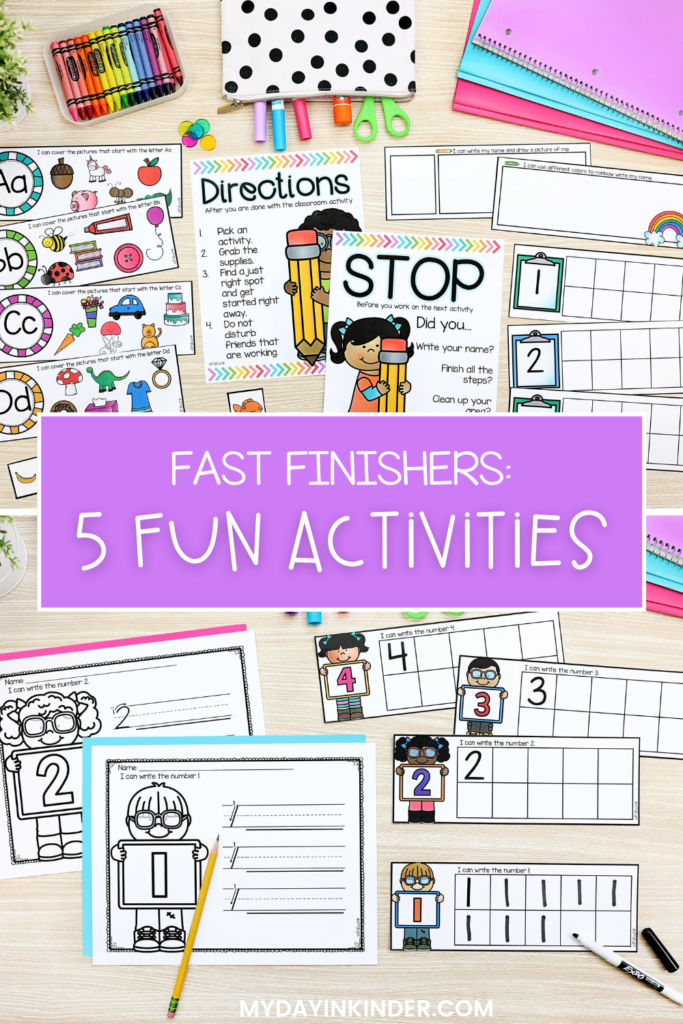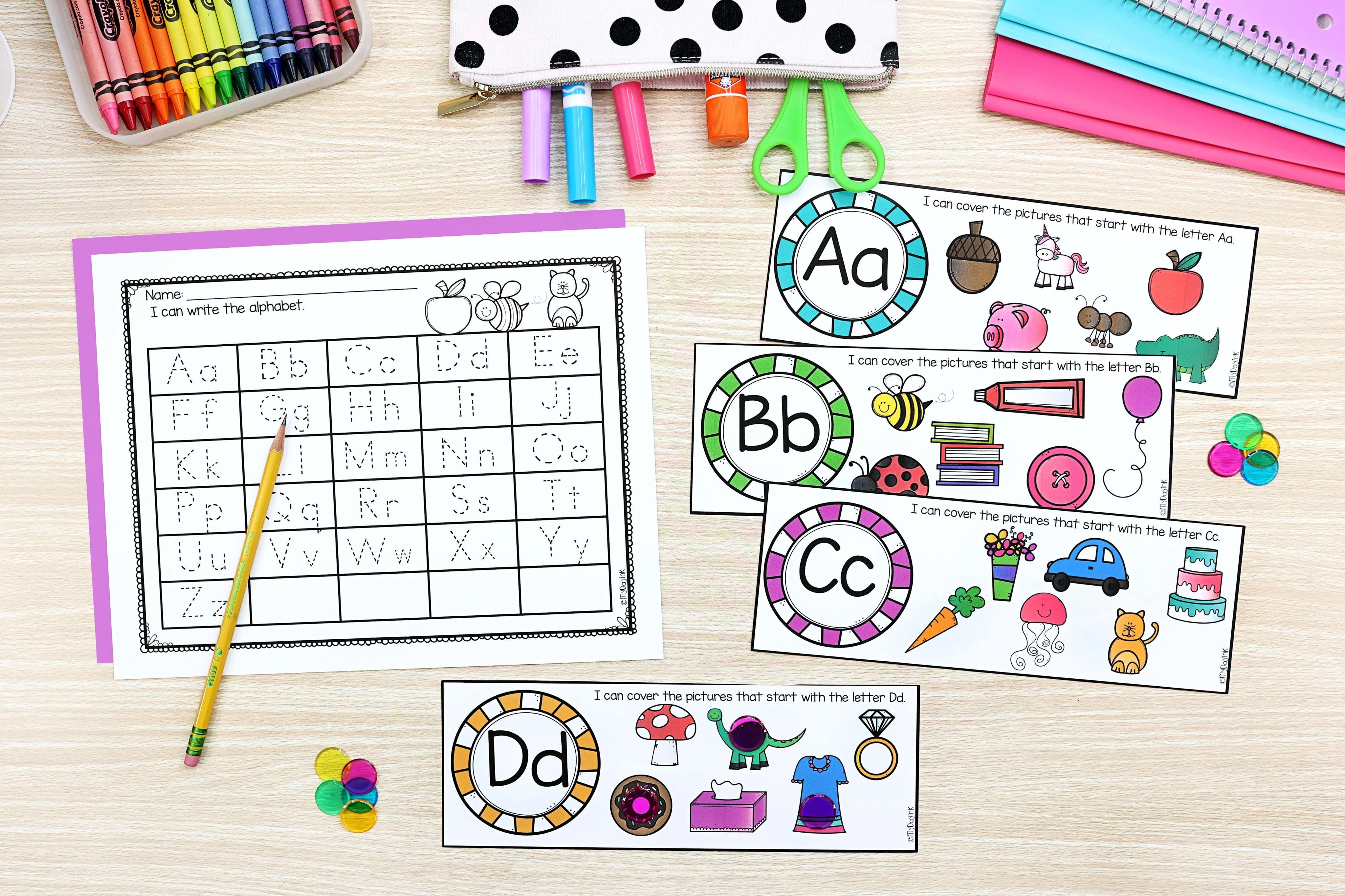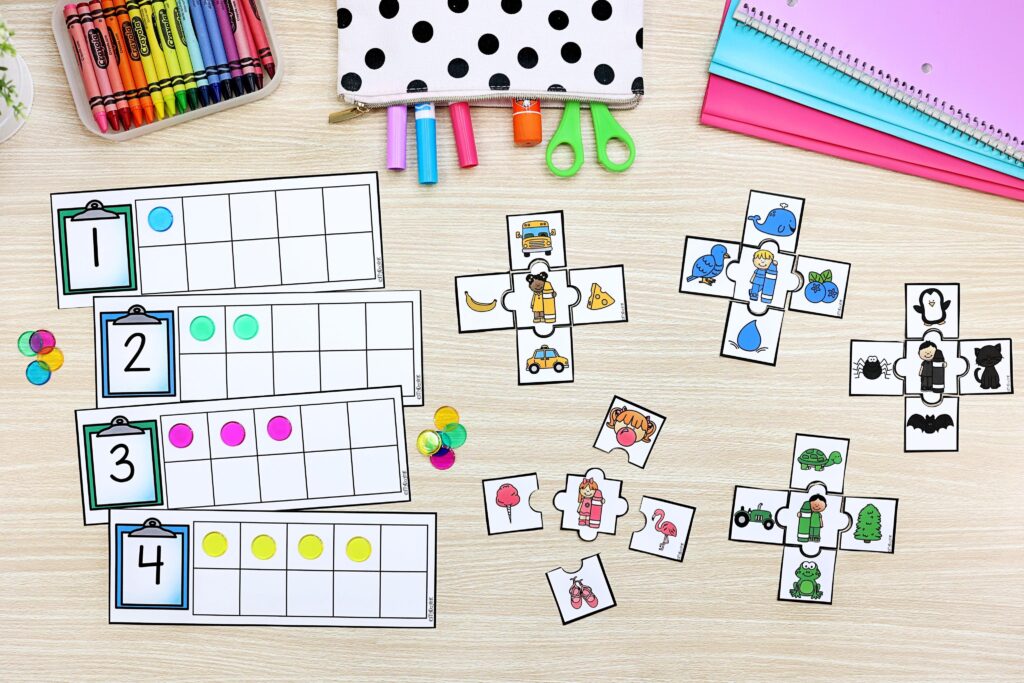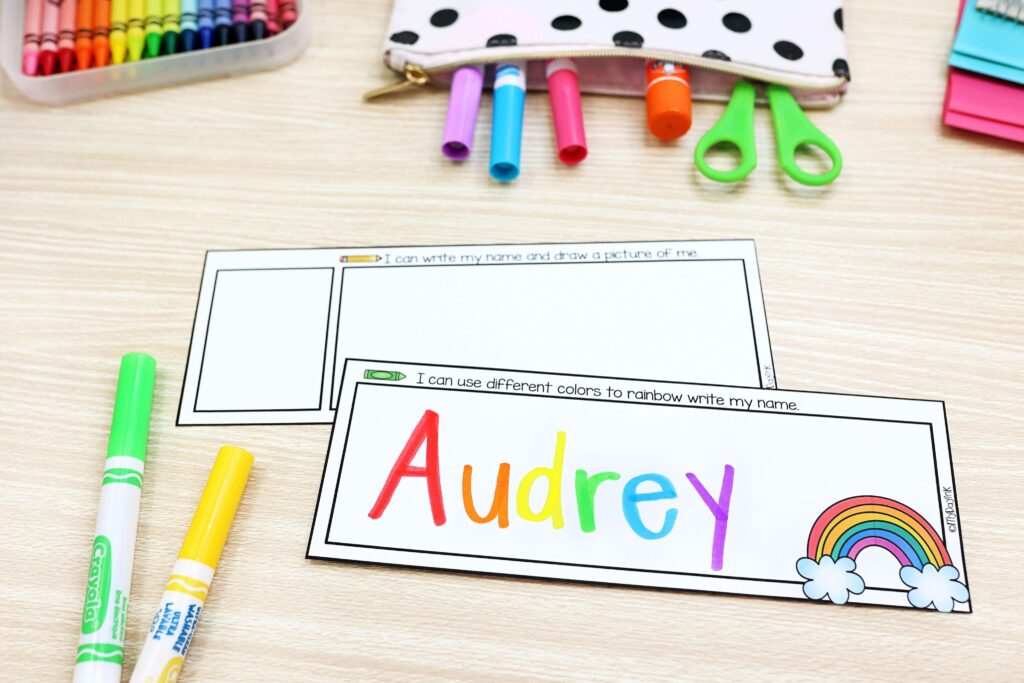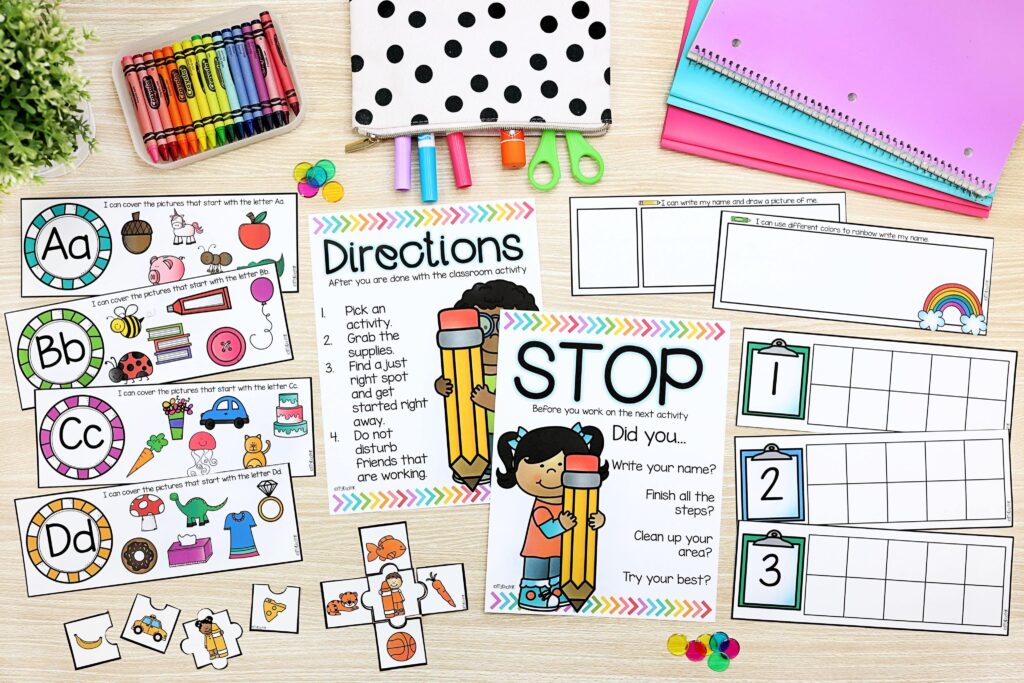Engaging Early Finisher Activities: Fueling Fun Learning in Kindergarten
Being a kindergarten teacher is a whirlwind of excitement and energy! One aspect that can sometimes be tricky to manage is what to do when some students complete tasks ahead of others. That’s where early finisher activities come in. There are many different early finisher activities, ways to organize these activities and present the choices. It’s always a good idea to find which type of system works best for you! Let’s keep your fast finishers happily learning.

What Are Eary Finisher Activities?
Early finisher activities are supplementary tasks or exercises designed to engage students who complete their assigned work ahead of their classmates. In short, these activities serve as a valuable extension of the regular curriculum, providing early finishers opportunities for continued learning and exploration.

These tasks are carefully selected to be stimulating and relevant, allowing students to go deeper into the subject matter or explore related concepts. Fast finisher activities can cover various educational ideas, from creative projects to critical thinking challenges.
Why Should Teachers Use Early Finisher Activities?
Early finisher activities are crucial in a teacher’s toolkit, ensuring every student’s learning needs are met. By offering these supplemental tasks, educators can engage early finishers, provide additional challenges, and foster a love for independent learning. As a matter of fact, this practice actually maximizes classroom time and creates a more inclusive and dynamic learning environment for all students.
- Continuous Engagement: Utilizing Early finisher activities ensures that all students are consistently engaged in meaningful learning. This prevents early finishers from becoming disinterested or restless while waiting for their peers to complete assignments.
- Differentiated Instruction: Every student learns at their own pace. Early finisher activities provide a way to differentiate instruction. All in all, it allows advanced learners to be appropriately challenged and supported in their educational journey.
- Maximizing Learning Time: By offering early finishers additional tasks, teachers optimize the use of valuable classroom time. This means that students are making the most out of their time in the classroom, furthering their academic progress.

- Fostering Independence: Early finisher activities encourage independent learning. Students have the opportunity to take initiative, and as a result, they are also able to explore subjects that interest them, promoting self-directed learning skills.
- Catering to Diverse Learning Styles: These activities can appeal to various learning styles and intelligences, accommodating different students’ strengths and preferences.
- Enhancing Classroom Management: When fast finishers have purposeful tasks to focus on, it reduces the likelihood of disruptions or off-task behavior. This contributes to a more structured and conducive learning environment.
- Encouraging a Love for Learning: Offering engaging activities to fast finishers fosters a positive attitude towards learning. It shows students that there is always something new and interesting to discover, instilling a lifelong love for education.
Incorporating early finisher activities into your teaching repertoire benefits early finishers and enriches the entire class’s overall learning experience. It’s a powerful tool for promoting active, individualized learning and ensuring every student receives the support and challenges needed to thrive academically.
What to Include in Early Finisher Activities
When crafting early finisher activities for your kindergarten classroom, it’s important to balance educational value and fun. Here are some key elements to consider:
- Relevance to Main Content: Ensure that the activities align with the main curriculum. They should provide opportunities for students to practice and reinforce what they’ve learned rather than introducing entirely new concepts.
- Engagement and Interactivity: Choose activities that actively engage students. Hands-on tasks, interactive games, and creative projects are excellent options. These not only keep students interested but also promote active learning.
- Differentiated Levels of Difficulty: Provide a variety of activities with varying levels of complexity. In order to cater to the diverse learning abilities of your students, ensure that everyone is appropriately challenged.
- Options for Creative Expression: Provide opportunities for students to express themselves creatively. On one hand, this could be through writing, drawing, or creating. On the other hand, it could also be building, inventing, or other artistic endeavors. Creative expression fosters individuality and allows students to showcase their unique strengths.
- Logic and Critical Thinking Challenges: Try to incorporate logic puzzles, problem-solving tasks, or critical thinking exercises. These activities stimulate cognitive development and encourage analytical thinking. These types of challenges are great even if you have students who struggle with critical thinking!
- Variety of Subjects: Obviously, it’s important to offer activities that cover different subjects, including math, language arts, science, and more. This ensures a well-rounded learning experience for early finishers.
By including these elements in your early finisher activities, you create a comprehensive and engaging set of options that cater to your kindergarten students’ diverse needs and interests. Specifically, this keeps fast finishers challenged and motivated and provides an enriching learning experience for the entire class.
Displaying the Choices
Displaying the choices of early finisher activities is critical to effective classroom management. It provides students with a clear and accessible selection of tasks to choose from once they’ve completed their primary assignments. Here are some creative ways to present these options.
Create a Choice Board
Design a visually appealing choice board displaying different early finisher activities. After that, use images or icons to represent each option, making it easy for kindergarten students to understand and select their preferred activity. This empowers them to take ownership of their learning, promoting independence and decision-making skills.
Rotate Activity Stations
Before starting, set up specific areas in your classroom where different activities will happen. Then, allow students to choose from these stations, providing various options to keep things exciting. This approach keeps the learning environment dynamic and ensures that students have diverse activities to explore, catering to various interests and learning styles.
Choice Menus or Learning Boards
Design choice menus or learning boards that showcase a variety of early finisher activities. Each activity can be represented with an engaging icon or image and a brief description. This visual display empowers students to make independent choices based on their preferences and areas of interest. It also encourages them to take ownership of their learning journey, promoting a sense of autonomy and responsibility in their educational pursuits.
Fast Finisher Activity Ideas
Early finisher activity ideas are the key to keeping all students engaged and challenged, regardless of their pace. These supplementary tasks allow students to delve deeper into subjects or explore related concepts independently. These ideas are designed to captivate young learners and foster a love for independent exploration and learning.
Writing Prompts
Encourage students to express their creativity through writing. Provide prompts that spark their imagination and let their stories come to life. At the same time, it improves their writing skills and nurtures their self-expression and storytelling abilities.
Logic Puzzles
Challenge their critical thinking skills with logic puzzles. These fun brain teasers will keep their minds engaged and working, promoting problem-solving and analytical thinking.
Task Cards
Incorporate task cards that cover a range of topics. These can be used for math practice, reading comprehension, or fun activities like scavenger hunts. Task cards provide a versatile tool for reinforcing key concepts in an interactive and enjoyable way.
Word Search
Boost vocabulary and reading skills with word searches. They’re a fun and effective way for students to learn new words while enhancing their spelling and language recognition abilities.
Fine Motor Skill Activities
Integrate activities that work on fine motor skills, like cutting, tracing, and coloring. These not only keep students engaged but also aid in their development. Fine motor activities are essential for strengthening hand muscles, which are crucial for tasks like writing and drawing.
Finding a resource that includes a diverse range of activities and also following along with your curriculum is the best way to go. Try a resource like this one. It includes literacy, math, and writing, allowing you to ensure your fast finishers are getting a little extra practice while having fun!
Remember, early finisher activities are a valuable tool in classroom management. They provide an opportunity for students to continue learning while allowing you to focus on those who may need extra support. Incorporating these engaging ideas will create a positive learning environment for all your kindergarten students. Plus, you’ll now have an answer when a student says, “Teacher, I’m Done. Now What!?”
